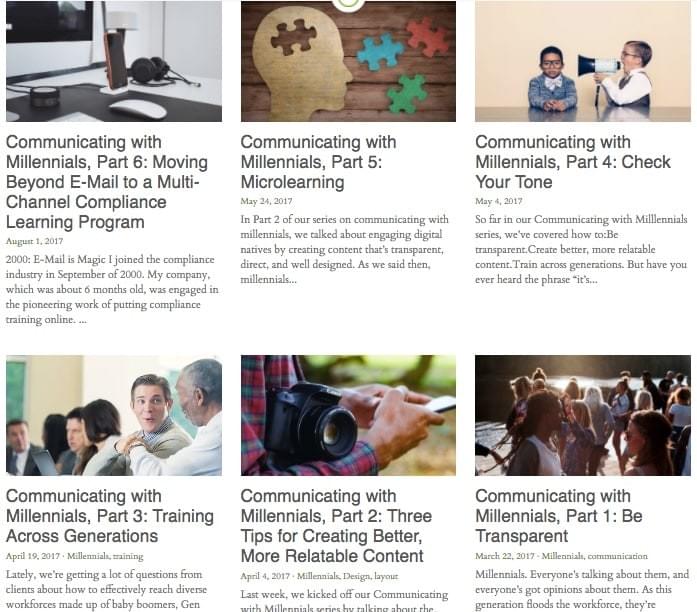Our post today wraps up our Communicating with Millennials series. As with every generation, there is no one-size-fits-all strategy for engaging Millennials, but there are some best practices. How about a quick recap?

- We kicked off the series by talking about the value of transparency and how to incorporate it into your compliance messaging. Millennials expect open, direct, and engaging communication — even from their employers, and even when more formal communications have historically been the norm.
- In part 2, we presented three tips for creating better, more relatable content. Millennials respond best to visually-based communications. And there’s a physiological reason: Humans are visual creatures — the human brain processes images 60,000 times faster than text. The generation that grew up on the Web is used to communicating in images, GIFs, or short videos. So incorporating visual approaches like these can help your audience understand and retain the content better.
- Then, in part 3, Renee tackled the generational divide when it comes to technology use. How can you reach everyone in an audience of Millennials, Gen Xers, and Baby Boomers? Our answer: keep it simple, keep it short, and keep it engaging. Move beyond one form of communication to think about ALL the ways you can reach your employees. This approach works for everyone, regardless of generation.
- Part 4 was all about tone and how to find the right one. Millennials expect the companies they work for to communicate freely and frequently — more like a person than an institution. As it turns out, this kind of open communication can be good for the company as a whole. So it’s important to find a “human voice” for your compliance content that fits your company’s culture.
- In Part 5, we looked at the growing trend toward microlearning — breaking up content into searchable, sharable, visual pieces that align with the way Millennials consume content online. Key quote: “Most learners even consider a four-minute video too long to watch. A third of all users abandon web pages within five seconds if they load too slowly.” Stark words for an industry built on 40-minute courses!
- Finally, in part 6, we covered the trend among Millennials of communicating across multiple channels — not just email. We looked at ways to communicate compliance messages through multiple channels, in short bites, in ways that are shorter, casual, more human, and more transparent.
But we have a confession to make, something that began to dawn on us halfway through this series: These tips aren’t just good for engaging Millennials.
In fact, the more research we did, the more we realized that our tips for communicating with Millennials are actually great best practices for communicating with everyone in a modern, online world. (Even people in your workforce who don’t sit at computers all day.)
Why? Simple: it’s a better way to communicate.

The Internet is like the Hunger Games of information: Only the strongest, most interesting content survives. Millennials have grown up online, so they expect content to be concise, engaging, and carefully crafted. They expect it to work hard to earn their attention.
But increasingly, other generations feel the same way. Anyone who’s been online for any length of time has been exposed to content that cuts through all the noise and makes an impact, triggers an action, or builds a human connection.
The way we all communicate has evolved — Millennials are just forcing companies to catch up.
As Lindsey Pollak, New York Times best-seller and Millennial workforce expert, put it: “Millennials want what all generations want. They simply will ask for it sooner than previous generations."
Companies that embrace the change are seeing benefits — not just for Millennial employees, but for the entire company.
And compliance programs that embrace the change will equip themselves with some powerful tools and new approaches that can help significantly increase the impact of their training and communications.
Millennials are going to be 50% of the global workforce by 2020. But, if you take one thing away from this series, make it this: Your company is already full of digital natives with a taste for modern communications. Already, your employees know how to ruthlessly screen out content that seems lazy, irrelevant, or boring, so you have to work hard to capture their attention.
Is your content up to the task?
Ready to upgrade your compliance program for the 21st century? We can help. Schedule a free consultation with the Rethink Compliance experts.
